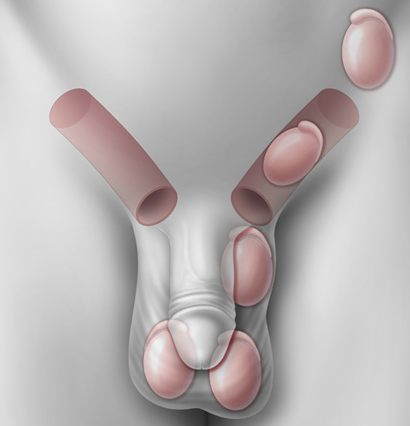Scientific Editor: Editorial Board ISUD website
What is Cryptorchidism?
Cryptorchidism is the absence of one or both testicles from their normal position (within the scrotum). Orchidopexy is the appropriate surgical correction of cryptorchidism, when the testicle is not in the normal position. This operation should be done in any case before the first 18 months of the infant's life, because, otherwise, the testicle will be destroyed. At older ages, orchidopexy is conducted when the testicle is still considered to be viable. It is also necessary for the better monitoring of the testis, given that in cryptorchidism the risk of testicular cancer is paraticularly high.
What preparation is required?
Preparation involves the basic preoperative assessment, i.e. blood tests and chest X-ray. The patient must follow the basic preoperative instructions, i.e. no food 8 hours before surgery and no water at all on the day of surgery.
What happens during the surgery?
The surgery is performed under general anesthesia. In most cases, the testicle is located within the inguinal canal. Through an incision high in the groin, the testis is located and prepared along with the other testicular elements (vessels, lymphatics, nerves and vas deferens). For the preparation of testicular elements, it is necessary to use special magnifying glasses or, even better, a surgical microscope. Then, the sheath is prepared inside the scrotum and the testis is fixed with suture as low as possible within the scrotum.
When the testicle is not detected in the inguinal canal, it is usually located and operated laparoscopically or rarely with open abdominal surgery. The testis is identified, prepared and positioned through the inguinal canal into the scrotum again, if this is feasible.
The average hospital stay is 1-2 days for laparoscopic or inguinal access, and 4-5 days if open abdominal surgery is required.
What abour after surgery
Upon discharge, you will receive specific instructions about:
- the antibiotics you are to receive postoperatively
- the postoperative wound care
- If there are non-absorbable sutures, they should be removed in seven to ten days after surgery.
What is the impact of the intervention on patient's life?
The common complications of orchidopexy are:
- The placement of the testis in a higher position than necessary due to poor preparation of its elements or due to poor fixation within the scrotum.
- Atrophy of the testicle due to poor postoperative perfusion.
- Wrong dissection of the vas deferens.
- Swelling and dilatation of the scrotum.
- Hydrocele.
Complete healing of the wound usually occurs in 10-12 days, and full recovery may take 2-3 weeks until returning to full activity.



